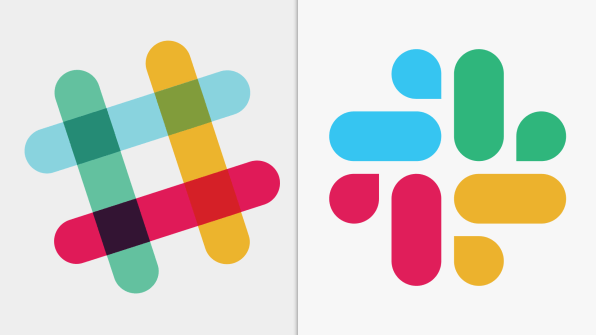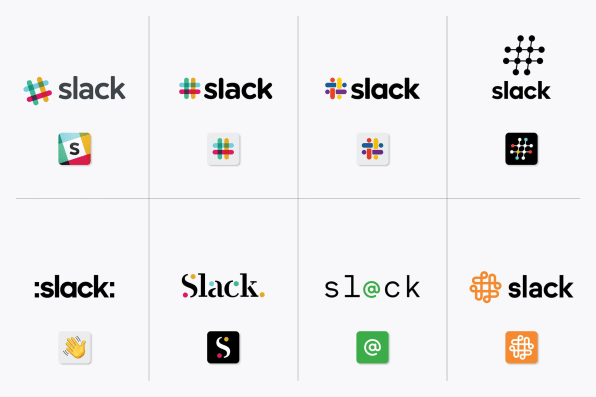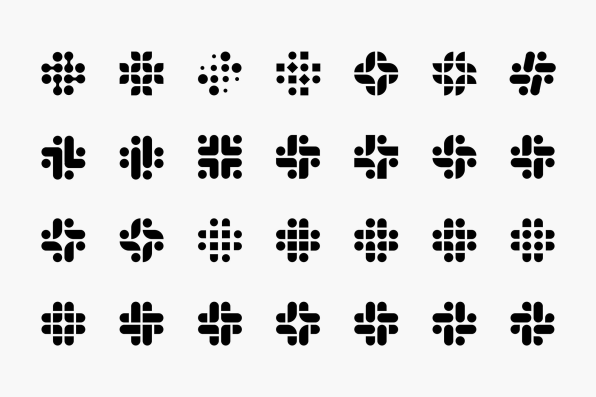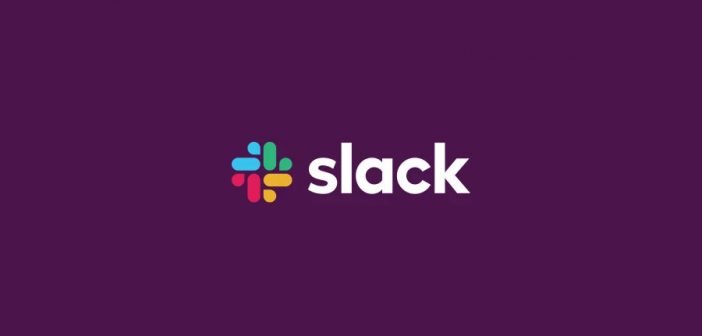“It’s a new brand coming into maturity now. If they were ever going to change . . . it was the now-or-never moment,” says designer Michael Bierut.
Slack, the beyond-successful work collaboration platform, has launched a new, buttoned-up brand in anticipation of its 2019 IPO. The new work, led by Pentagram, kills off the company’s longstanding hashtag logo. The playful plaid is gone, too.
Why rebrand a business that is young, recognizable, and has celebrated a stratospheric growth, becoming an $8 billion company with 8 million daily users since launching in 2013? After the company announced the change today, I talked to Michael Bierut, the Pentagram partner leading the project, to find out.

The new branding includes several big changes. The wordmark has been given sharp edges instead of its old Sharpie scrawl, but it’s still set in lower case, promising that Slack isn’t that grown up–yet! Meanwhile, the Slack octothorpe (a word I’m not going to pretend I knew before five minutes ago that really just means “hash”) has evolved into a four-color pinwheel made up of shapes that Pentagram dubs “droplets” and “lozenges,” which replace the argyle.What was wrong with the hashes and plaids? Long story short, the simple-looking hash was exceedingly complicated to execute. “It was . . . extremely easy to get wrong. It was 11 different colors–and if placed on any color other than white, or at the wrong angle (instead of the precisely prescribed 18-degree rotation), or with the colors tweaked wrong, it looked terrible. It pained us,” Slack writes on its blog. And the solutions Slack used to date–which included three vastly different treatments that sometimes included an “S,” or were black and white–lacked the “cohesion” that big, multinational corporations crave.
As the company plans its IPO, it was also time to start thinking about how the brand would age.
“Like a lot of logos, in five or so years, it became associated with what you or I think of Slack. But it doesn’t have a 50-year heritage, or even a 10-year heritage,” Bierut says in a phone interview. “It’s a new brand coming into maturity now. If they were ever going to change . . . it was the now-or-never moment.”
As Bierut puts it, Pentagram tried just about everything, from “just sort of tidying up and getting their current assets organized and more in alignment,” to a series of alternate approaches that went so far as to depict Slack as a game of connect the dots. It’s not entirely apparent from what you see here, but what they ultimately landed on was a symbol of Slack as a network rather than a hashtag.
“The story we’re trying to associate with it is it feels like pieces coming together to form a whole,” says Bierut. “You get a sense of e pluribus unum a little bit in a way I’d argue you don’t get from two parallel lines crossing two other parallel lines.”
The distinct pieces of that pinwheel will become multifunctional tools for the brand. The droplet shape can depict a chat bubble or GPS coordinate as necessary; the lozenge will debut unannounced functions, too. Slack’s pinwheel today can do a lot more than its octothorpe could yesterday.

All that logic makes sense. But it also feels like Slack had a defining aesthetic that could have been coaxed into cohesion without ditching much of its brand equity. After all, against all odds, Slack had successfully co-opted the hashtag over its peers–and that symbol was closely associated with the way rooms are defined within the Slack user interface. One could make an argument that Slack’s old brand was both distinctive and tied well to its function.Bierut disagrees on both points.
“I sort of think a hashtag and plaid, as a shape and motif, both kind of arrive pretty much finished. The hashtag is certainly not own-able . . . it came into its own on Twitter,” he says. “The plaid was useful exuberance. Why not have 11 colors? This is fun! But then it becomes a tartan that’s associated with its clan in an immutable sort of way. One thing we were looking for was a fundamental symbol at the center that could be atomized, reconstructed, and generate a lot of things.”

In any case, we will all adjust to the new Slack icon on our laptops and smartphones. We will grow beyond the “OMG this looks weird!” shock, as we always do with new brands. Bierut attributes our ability to adapt not to Pentagram’s ingenious use of color, shape, or symbology, but to how quickly omnipresent digital platforms can habituate us to new designs, simply by constant, unrelenting association. It’s impossible not to get used to a logo when you stare at it for eight or more hours a day.
“What it will symbolize, ultimately, is Slack,” says Bierut of the logo. “Because it’s the doorknob on the door that lets [people]into that world.”
–
This article first appeared in www.fastcompany.com
Seeking to build and grow your brand using the force of consumer insight, strategic foresight, creative disruption and technology prowess? Talk to us at +9714 3867728 or mail: info@groupisd.com or visit www.groupisd.com


![[Image: courtesy Pentagram]](https://images.fastcompany.net/image/upload/w_562)